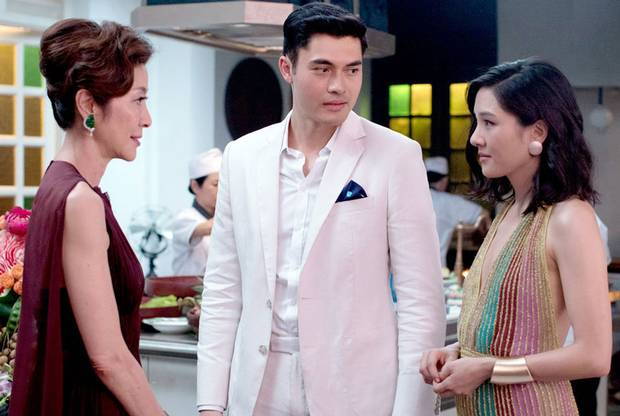
Diversity and representation in the media has become a popular topic — every new movie that Hollywood produces seems to be examined, investigated, and picked apart for its chosen cast. The summer of 2018 gifted movies that generated a lot of online buzz for their inclusive casts, such as the three rom-coms: “Set It Up,” “Crazy Rich Asians,” and “To All the Boys I’ve Loved Before.” Although only one of the movies was made for the big screen (“Crazy Rich Asians”), the other two still reached a wide audience through Netflix with its ever-growing popularity. Many celebrated the rather sudden outburst of positive Asian American characters in the movies appropriately played by Asian American actors. But what prompted these movies to be made, and do they deserve the praise they received?
Hollywood and many other sources of media have been criticized for their lack of diversity and representation for a very long time, but their invincibility meant they could ignore the frustration. The most impactful shift in recent memory is the disastrous 2015 Oscars nominees list (all 20 nominees in acting categories were white), which provoked the #OscarsSoWhite outrage and subsequent damage to Hollywood’s power and reputation. Although Hollywood and the Oscars have visibly tried to amend their lack of diversity since then, movies produced after the outrage seem to be created out of apology and hopes to appease an audience, rather than a genuine desire to tell the stories of minorities.

But what kind of stories should we want to tell? Where should Asian American representation begin in Hollywood movies?
“Set It Up” and “To All the Boys I’ve Loved Before” both featured female Asian characters, but their Asian identities were not the main focus of the movies. Lucy Liu’s character, Kirsten, in “Set It Up” is a strong, successful, motivated boss, whose Asian background is never discussed. Lana Condor’s character, Lara Jean, in “To All the Boys I’ve Loved Before” is also not defined by her mixed Korean-American background: those who anticipated a platform for discussion of teenagers with mixed backgrounds were disappointed by the complete absence of their struggles. The only nod to Lara Jean’s Asian background was mention of an Asian actor in a movie she watches along with the Korean yogurt drink her sister loves. Thus, both characters could be from different backgrounds and the plot of the movies would not change. Some might see this as positive representation — Asian Americans being portrayed as any other kind of American rather than an odd, exotic stereotype — but this representation is not sufficient.
Perhaps representation and diverse casts should focus on films that aim to celebrate differences that arise from not being a part of the majority-being a minority- before normalizing the existence of these differences. The film “The Joy Luck Club” from 1993 centers around four Chinese mother-daughter relationships that are complicated and strained at times due to clashing cultural values and beliefs. The story is packed with Asian culture and taking away the characters’ Asian backgrounds would decimate most of the story.
“Crazy Rich Asians” seems to hit the sweet spot between the two ends of the spectrum by normalizing Asian Americans as well as highlighting their differences and the struggles they face. The movie had an opening weekend profit of $26.5 million and holds a current worldwide gross of $165.7 million, placing it as sixth place for top-grossing romantic comedies (boxofficemojo). This extreme success prompted the signing of numerous new movies featuring Asian casts slated to open next year: a “Crazy Rich Asians” sequel, Disney’s live action “Mulan,” and “Always Be My Maybe” (another romantic comedy) along with many others. With the population of Asian Americans steadily growing (the U.S. Asian population grew by 72% between 2000 and 2015 (pewresearch.org), it is no wonder that producers are scrambling to create films with Asian American casts — what better way to make money than to pander to a growing audience hungry for characters like them, actors and celebrities to love, and stories to relate to?

The recent Asian American representation has delighted many, with great performances by Lucy Liu, Constance Wu, and Lana Condor, along with numerous other Asian American actors. However, we must remain critical of the movies and media that Hollywood and other streaming services produce. As exciting and thrilling as long-awaited representation is, the three rom-coms discussed are rom-coms after all: movies designed to be light-hearted with a focus on a single relationship. Let’s not be lulled into satisfaction simply by seeing more people on screen that look like us.